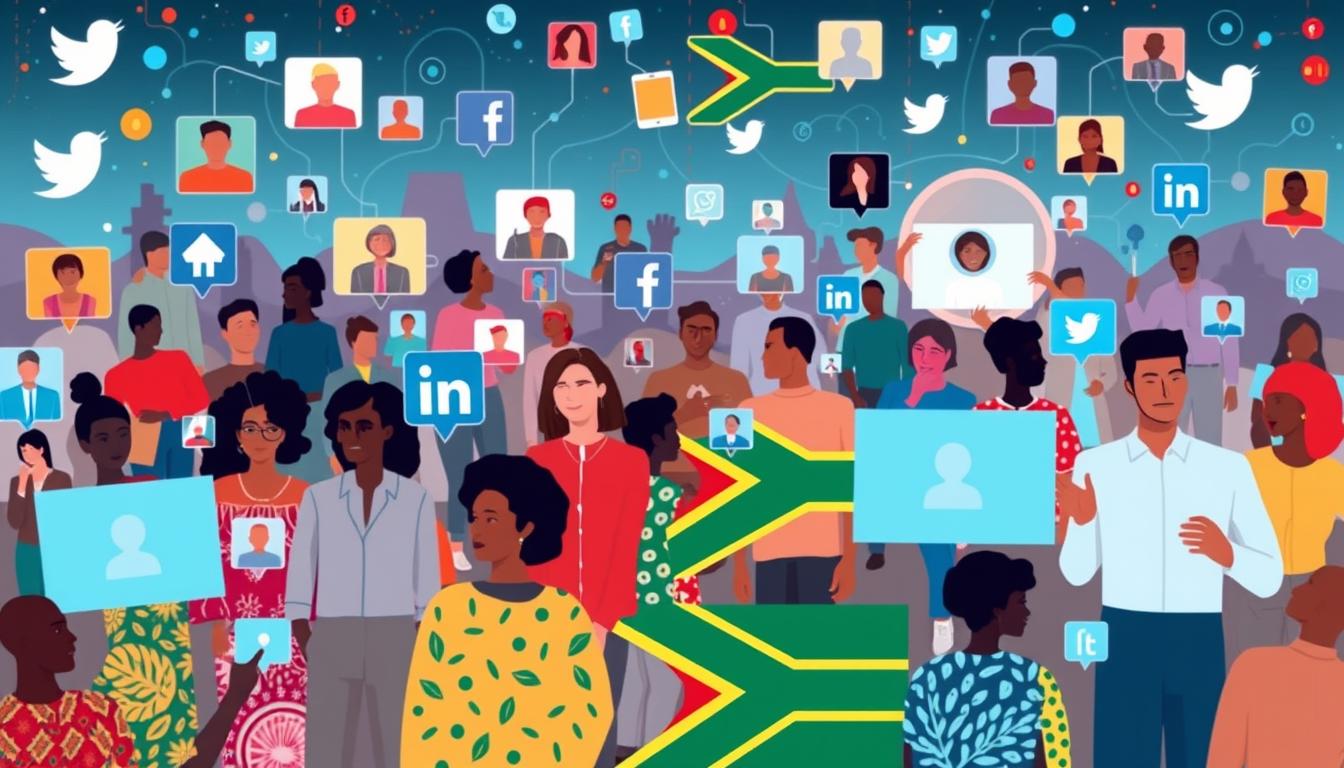In today’s dynamic world of recruitment, the emergence of social media has sparked a revolution in how companies engage with potential candidates. Traditional methods, such as newspaper advertisements and job fairs, became obsolete years ago. Despite a temporary vacuum created by the power and reach of digital platforms,.
From professional networks like LinkedIn to ubiquitous social sites like Facebook, Twitter, and Instagram, recruiters now have a plethora of tools at their disposal to connect with talent in innovative ways. In this article, we dive into the pivotal role of social media in modern recruitment strategies, examining how these platforms have reshaped the hiring landscape. Without further ado, let’s explore the profound impact of social media on recruitment practices and what brought us to this point.
Table of Contents
The Evolution of Recruitment
In the past, the recruitment landscape was dominated by newspaper advertisements, job fairs, and word-of-mouth referrals. Companies relied heavily on manual methods to attract potential candidates for job openings. They would invest in newspaper ads, often taking up significant space to showcase their vacancies and entice job seekers. They would also pay to have the privilege of marketing themselves at a job fair. They set up booths to interact with attendees and collect resumes.
These methods, while effective to some extent, were constrained by their reach and reliance on manual processes. Newspaper ads could only reach those who actively read the publication, while job fairs were limited to specific locations and timeframes. Furthermore, submitting applications often involved tedious processes such as mailing physical copies or delivering them in person, adding delays to the recruitment timeline. Interviews were typically conducted face-to-face, requiring both candidates and hiring managers to allocate time and resources for in-person meetings. Overall, the recruitment process was labor-intensive and inefficient.
Digital Era
You can condense the myriad of technological advancements that have changed recruitment into two branches: social media and artificial intelligence.
Social Media
Social media platforms have become indispensable tools for recruiters. They offer unparalleled reach and efficiency in connecting with potential candidates. In the past ten years, there’s been an explosion in the number of jobs you can do online. There are dedicated platforms for freelancing that we’ll discuss later in this article, but a lot of people market their services on social media.
These platforms have democratized the hiring process and enabled organizations of all sizes to access a diverse talent pool with unprecedented ease. Platforms like LinkedIn, Facebook, Twitter, and Instagram have become virtual marketplaces for talent. When recruiters have multifaceted avenues to engage with candidates, they can showcase company culture and broadcast job opportunities to a global audience.
This entire process was accelerated during the COVID-19 pandemic. People had to work from home, and once the world opened up, they wanted to work from home. This directly increased the traffic on all platforms that could supplement an exchange of services. People began utilizing any avenue they could to find work, and social media was the first option for many. However, this increased traffic demanded a more sophisticated method of organization.
Artificial Intelligence
The evolution of AI-driven recruitment technologies has ushered in an era of data-driven decision-making, enabling recruiters to analyze candidate profiles, assess skill compatibility, and predict job fit with remarkable accuracy. Automated screening processes powered by AI algorithms can swiftly sift through resumes, identify top candidates, and prioritize applications based on predefined criteria, thereby expediting the hiring process while minimizing human bias.
In essence, the combination of social media and AI has redefined the recruitment landscape. They offer unique opportunities for organizations to optimize their talent acquisition. They can cultivate stronger employer branding, foster candidate engagement, and secure top talent. Employers and employees don’t even have to actively look for each other. Platforms that use AI-based recommendations will automatically match people with the right skills to the right opportunities.
Additionally, having AI-powered collaboration platforms has made it possible for people to work from home. If we didn’t have the computing power to sustain the demand for virtual employment, the trend would have died down. Instead, the demand for flexible work environments is higher than ever in Gen-Z.
Social Media
Now that we understand the ways in which recruitment has transformed in the digital era, we can look at how specific platforms have directed this journey.
LinkedIn is the face of virtual employment. It’s a unique platform that’s integrated social media and recruitment with remarkable success. It uses a sophisticated set of algorithms to enhance networking and recruitment. They’re designed to analyze user behavior, preferences, and interactions on the platform, enabling LinkedIn to provide personalized recommendations and content tailored to each user’s interests and goals.
The recommendation algorithm is the key to success; they’ve reached 700 million users. It suggests relevant connections, job opportunities, and content based on a user’s profile information, skills, experience, and activity. With machine learning and data analytics, LinkedIn continuously refines its recommendation algorithm to deliver more accurate and timely suggestions to users.
Additionally, it ranks search results based on the relevance of the user’s profile to an employer’s search query, the completeness of the profile, and relevant network connections. By incorporating natural language processing and semantic analysis techniques, LinkedIn’s search algorithm has become one of the best on any commercial platform.
In addition to its advanced algorithms, LinkedIn offers several standout features that enhance its effectiveness as a recruitment and networking platform. LinkedIn Recruiter is a premium subscription service that gives recruiters access to advanced search filters, tools for managing candidate relationships, and analytics to track the effectiveness of recruitment campaigns. All-in-all, LinkedIn is in a league of its own. No other social media platform is dedicated to professional networking at this scale, and no one does it better.
Facebook has undergone a remarkable transformation from being a social networking platform to becoming a significant player in the recruitment arena. With a massive user base of approximately 2.8 billion monthly active users, Facebook presents a vast pool of potential candidates for recruiters to tap into. What distinguishes them from other platforms is their multifaceted nature. It allows recruiters to target candidates based on demographics, interests, and location with immense precision.
One of the ingredients of its success is its marketplace functionality. Originally introduced as a platform for buying and selling goods locally, Facebook Marketplace has evolved into a valuable resource for job seekers and recruiters alike. Job seekers can now browse through listings in their local area, filter by industry or job type, and even apply directly through the platform. This convenience and accessibility have made it a popular choice for both active and passive job seekers.
Moreover, Facebook’s robust advertising tools enable recruiters to reach highly targeted audiences with their job postings. They can increase the likelihood of attracting qualified applicants and reduce wasted resources by avoiding irrelevant audiences. The interactive nature of Facebook also facilitates engagement between recruiters and candidates. Companies like Starbucks and Walmart have used their Facebook pages to post job openings and engage with potential candidates through comments and direct messages.
This direct line of communication allows recruiters to provide additional information about job opportunities, answer questions from interested candidates, and even conduct preliminary screenings. Facebook’s group feature also provides a platform for niche communities to connect and share information. Industry-specific groups, alumni networks, and professional associations are just a few examples of the diverse communities that exist on Facebook.
This grassroots approach to recruitment has made Facebook an easy option for anyone looking for a job. It lets recruiters tap into highly engaged and relevant talent pools, bypassing traditional recruitment channels and accessing candidates who would have slipped through the cracks elsewhere.

You may be surprised to find out how big recruitment is on Twitter. With approximately 353 million monthly active users, Twitter provides recruiters with a significant audience to engage with. Recruiters can use Twitter to share job postings, participate in industry discussions, and directly interact with potential candidates through messages and relevant hashtags. According to a survey by Jobvite, 45% of job seekers use Twitter as a part of their job search strategy. Additionally, 8% of recruiters report successfully hiring a candidate through Twitter, indicating its effectiveness as a recruitment tool.
Companies like Tesla and SpaceX have embraced Twitter as a means to recruit talent for specialized roles. By using Twitter’s real-time communication capabilities and engagement features, they can connect with individuals who possess the skills and expertise they require. Moreover, Twitter enables recruiters to showcase their employer brand and company culture, providing candidates with valuable insights into the organization’s values and working environment.
Instagram has evolved into more than just a platform for sharing photos and videos, boasting over 1 billion monthly active users. It has become a unique avenue to showcase your brand and engage with potential candidates. Companies can provide glimpses into their workplace culture, share employee testimonials, and offer behind-the-scenes content, all of which contribute to attracting top talent. While this is similar to what Twitter offers, Instagram is way more visual. It also has the added benefit of short-form video, which has emerged as the king of social media content.
Additionally, Instagram’s interactive features, such as direct messages, polls, and Q&A sessions, allow for direct engagement between recruiters and job seekers, fostering meaningful connections and conversations. According to a survey by Jobvite, 37% of job seekers utilize Instagram in their job search journey. This underscores its significance as a recruitment platform. Moreover, 5% of recruiters have reported successfully hiring candidates through Instagram.
Companies like Nike and Apple have capitalized on Instagram’s reach and engagement capabilities to showcase their company culture, diversity initiatives, and career opportunities. By targeting younger demographics and creative professionals, these companies effectively attract candidates who align with their organizational values and aspirations.
Freelancing Platforms
According to a report by the Freelancers Union, 59 million Americans freelanced in 2020, highlighting the widespread adoption of freelance work. Recruiters can tap into freelancing platforms to discover skilled talent for various projects and roles. Websites like Upwork, Freelancer, and Fiverr host millions of talented users offering diverse skills and expertise. You can browse through profiles, portfolios, and reviews to identify suitable candidates for your specific needs.
For instance, Upwork has over 18 million registered freelancers and facilitates over $2 billion in annual freelancer earnings. Recruiters can post job listings or directly reach out to freelancers based on their qualifications or experience. Freelancer.com, with its user base exceeding 50 million, provides recruiters with access to a global talent pool spanning numerous industries and specialties.
These platforms offer recruiters the flexibility to hire talent on a project-by-project basis, making them ideal for short-term assignments or specialized tasks. Moreover, freelancing platforms often include built-in communication and project management tools, simplifying collaboration between recruiters and freelancers. By using these platforms, recruiters can efficiently connect with freelancers worldwide.
In conclusion, social media has revolutionized recruitment. It has granted recruiters unparalleled access to diverse talent pools and simplified the hiring process. Through platforms like LinkedIn, Facebook, Twitter, and Instagram, companies can extend their reach, strengthen their employer brand, and engage with top talent in unprecedented ways. As technology advances, recruiters must stay updated and adjust their approaches to meet evolving recruitment demands. With effective strategies and tools, companies can attract and retain top talent, fueling innovation.
For more similar blogs, visit EvolveDash today!
FAQs
- How can small businesses use social media for hiring?
Small businesses can post job openings, engage with candidates through comments and messages, and showcase company culture through content on platforms like Facebook and LinkedIn.
- What are the risks of using social media for recruitment?
Risks include privacy concerns, bias in hiring decisions, and relying too much on social media presence rather than skills and experience.
- How can recruiters verify candidate information found on social media?
Recruiters should cross-check details with resumes, conduct background checks, and request references to ensure accuracy.
- Can social media recruitment work for all industries?
While social media is useful for most industries, some sectors, like highly technical fields, may still rely more on traditional hiring methods.
- What are the best practices for engaging job seekers on social media?
Recruiters should use clear job descriptions, respond to inquiries, share employee testimonials, and actively participate in industry discussions to attract candidates.



















